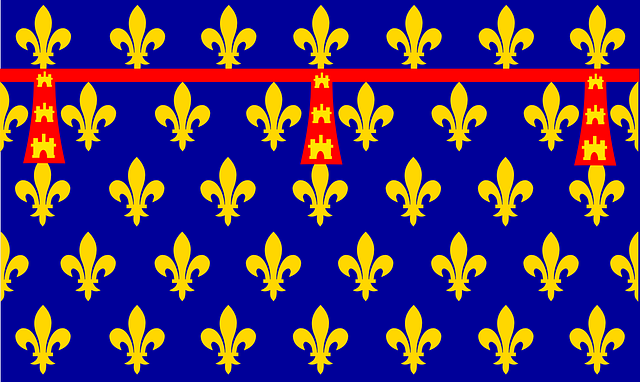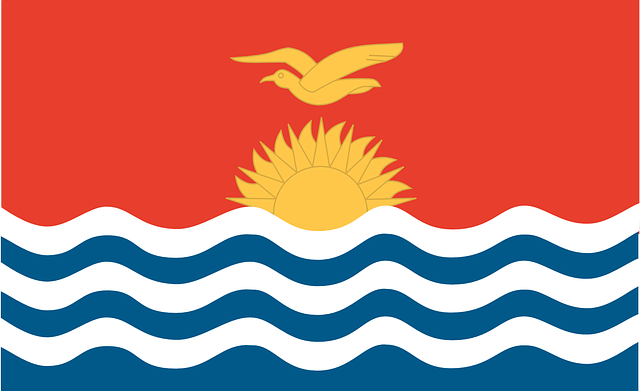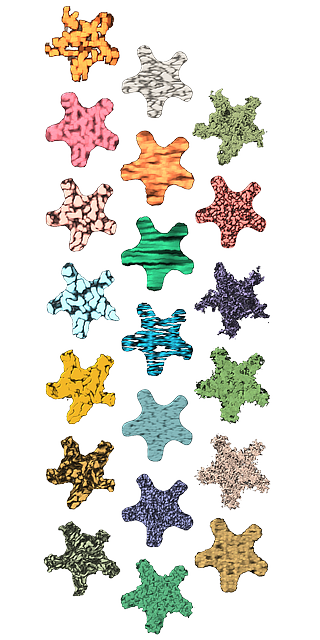أسماء اسطنبول
مدينة اسطنبول عٌرفت عبر العصور باسماء مختلفة كثيرة. أبرز الاسماء بجانب الاسماء الهجرية الحديثة هي بيزنطة، القسطنطينية واسطمبول. الاسماء المتنوعة للمدينة ترتبط بمراحل المدينة التاريخية المتنوعة واللغات المتنوعة.
الاسماء في تسلسل تاريخي
بيزنطة
Byzantion (Βυζάντιον), Latinized as Byzantium, was the first known name of the city. It was founded by Greek colonists from Megara in 667 BC and, according to legend, named after their king Byzas (Βύζας), a Thracian name.
Much later, the name Byzantium became common in the West to refer to the Eastern Roman Empire, the "Byzantine" Empire, whose capital the city had been. This usage was introduced only in 1555 by the German historian Hieronymus Wolf, a century after the empire had ceased to exist. During the time of the empire itself, the term Byzantium was restricted to the city itself, rather than the empire that it ruled.
Augusta Antonina
Augusta Antonina was a name given to the city during a brief period in the 3rd century AD. It was conferred to it by the Roman emperor Septimius Severus (193-211) in honour of his son Antoninus, the later emperor Caracalla.
روما الجديدة
Before the Roman emperor Constantine the Great made the city the new eastern capital of the Roman Empire on May 11, 330, he undertook a major construction project, essentially rebuilding the city on a monumental scale, partly modelled after Rome. Names of this period included ἡ Νέα, δευτέρα Ῥώμη 'the New, second Rome',Alma Roma Ἄλμα Ῥώμα, Βυζαντιάς Ῥώμη, ἑῴα Ῥώμη 'Eastern Rome', Roma Constantinopolitana.
The term "New Rome" lent itself to East-Western polemics, especially in the context of the Great Schism, when it was used by Greek writers to stress the rivalry with (the original) Rome. New Rome is also still part of the official title of the Patriarch of Constantinople.
القسطنطينية
Constantinople ("City of Constantine") was the name by which the city became soon more widely known, in honor of Constantine the Great. The Greek form is Kōnstantinoupolis (Κωνσταντινούπολις); the Latin form is Constantinopolis. It is first attested in official use under emperor Theodosius II (408-450). It remained the principal official name of the city throughout the Byzantine period, and the most common name used for it in the West until the early 20th century. It was also used (including its Kostantiniyye variant) by the Ottoman Empire until the advent of the Republic of Turkey.
Some Byzantine writers would vary the use of the names Byzantium and Constantinople depending on religious historical context; Byzantium was associated with the city's pagan roots, while Constantinople was associated with Christianity.[][]
Other Byzantine names
Besides Constantinople, the Byzantines referred to the city with a large range of honorary appellations, such as the "Queen of Cities" (Βασιλὶς τῶν πόλεων). In popular speech, however, the most common way of referring to it came to be simply The City (Greek: hē Polis, ἡ Πόλις, Modern Greek: i Poli, η Πόλη). This usage, still current today in colloquial Greek and Armenian (Պոլիս, pronounced "Bolis" in the Western Armenian dialect prevalent in the city), also became the source of the later Turkish name, Istanbul (see below).
القسطنطينية
Kostantiniyye (Arabic القسطنطينية, al-Qusṭanṭiniyah, Ottoman Turkish قسطنطينيه Kostantiniyye) is the name by which the city came to be known in the Islamic world. It is an Arabic calqued form of Constantinople, with an Arabic ending meaning 'place of' instead of the Greek element -polis. After the Ottoman conquest of 1453, it was used as the most formal official name in Ottoman Turkish, and remained in use throughout most of the time up to the fall of the empire in 1923. However, during some periods Ottoman authorities favoured other names (see below).
اسطنبول
The modern Turkish name İstanbul (تُنطق [isˈtanbul]) is attested (in a range of variants) since the 10th century, at first in Armenian and Arabic and then in Turkish sources. It derives from the Greek phrase "εις την Πόλιν" or "στην Πόλη" [(i)stimboli(n)], both meaning "in the city" or "to the city"; a similar case is Stimboli, Crete. It is thus based on the common Greek usage of referring to Constantinople simply as The City (see above). The incorporation of parts of articles and other particles into Greek placenames was common even before the Ottoman period, Navarino for earlier Avarino, Satines for Athines, etc. Similar examples of modern Turkish placenames derived from Greek in this fashion are İzmit, earlier İznikmit, from Greek Nicomedia, İznik from Greek Nicaea ([iz nikea]), Samsun (s'Amison = "se + Amisos"), and İstanköy for the Greek island Kos (from is tin Ko). The occurrence of the initial i- in these names may partly reflect the old Greek form with is-, or it may partly be an effect of secondary epenthesis, resulting from the phonotactic structure of Turkish.
İstanbul was the common name for the city in normal speech in Turkish even before the conquest of 1453, but in official use by the Ottoman authorities, other names such as Kostantiniyye were preferred in certain contexts. Thus, Kostantiniyye was used on coinage up to the late 17th and then again in the 19th century. The Ottoman chancelery and courts used Kostantiniyye as part of intricate formulae in expressing the place of origin of formal documents, such as be-Makam-ı Darü's-Saltanat-ı Kostantiniyyetü'l-Mahrusâtü'l-Mahmiyye. In 19th century Turkish bookprinting it was also used in the impressum of books, in contrast to the foreign use of Constantinople. At the same time, however, İstanbul too was part of the official language, for instance in the titles of the highest Ottoman military commander (İstanbul ağası) and the highest civil magistrate (İstanbul efendisi) of the city.İstanbul and several other variant forms of the same name were also widely used in Ottoman literature and poetry.
After the creation of the Republic of Turkey in 1923, the various alternative names besides İstanbul became obsolete in the Turkish language. With the Turkish Postal Service Law of March 28, 1930, the Turkish authorities officially requested foreigners to cease referring to the city with their traditional non-Turkish names (such as Constantinople, Tsarigrad, etc.) and to adopt Istanbul as the sole name also in their own languages. Letters or packages sent to "Constantinople" instead of "Istanbul" were no longer delivered by Turkey's PTT, which contributed to the eventual worldwide adoption of the new name.
In English the name is usually written "Istanbul". In modern Turkish the name is written "İstanbul" because in the Turkish alphabet dotted i (capital İ) is a different letter from dotless ı (capital I).
Stamboul
Stamboul or Stambul is a variant form of İstanbul. Like Istanbul itself, forms without the initial i- are attested from early on in the Middle Ages, first in Arabic sources of the 10th century and Armenian ones of the 12th. Some early sources also attest to an even shorter form Bulin, based on the Greek word Poli(n) alone without the preceding article. (This latter form lives on in modern Armenian.)
Stamboul was used in Western languages as an equivalent of İstanbul, until the time it was replaced by the official new usage of the Turkish form in the 20th century. In the 19th and early 20th centuries, English-speaking sources often used Constantinople to refer to the metropolis as a whole, but Stamboul to refer to the central parts located on the historic peninsula between the Golden Horn and the Sea of Marmara.
إسلامبول
إسلامبـُل (الكثير من الإسلام) أوإسلامبول (اعثر على الإسلام) كانتا تحويرات من الأصل الشعبي لحدثة اسطنبول Istanbul التي صيغت بعد الفتح العثماني في 1453 للتعبير عن دور المدينة الجديد كعاصمة الخلافة العثمانية الإسلامية. وورد استخدامها لأول مرة بعد الفتح بفترة قصيرة، ونسب الكتاب المعاصرون للحدث اختراع الحدثة إلى السلطان محمد الفاتح نفسه. بعض المصادر العثمانية من القرن 17، وأبرزهم أولياء چلبي، تصفها على أنها أكثر الأسماء الهجرية شيوعاً في ذلك الوقت. وبين آخر القرن 17 وآخر القرن 18، حظت بالاستخدام الرسمي. أول استخدام لحدثة "إسلامبول Islambol" على العملات المصكوكة كان في 1703 (1115 هـ) أثناء عهد السلطان أحمد الثالث. التعبير قسطنطينية ظل متداولاً حتى القرن العشرين، خاصة في السياقات التاريخية والكهنوتية المسيحية.
اسماء عثمانية أخرى
Ottomans and foreign contemporaries, especially in diplomatic correspondence, referred to the Ottoman imperial government with particular honorifics. Among them are the following:
- Dersaadet (در سعادت 'Gate of Felicity')
- Derâliye (در عاليه 'Gate of Felicity')
- Bâb-ı Âlî (باب عالی 'The Sublime Porte')
- Pâyitaht (پایتخت, 'The Seat of the Throne')
- Asitane (آستانه, 'The Doorstep' of the Sultan/Government or 'The Center' of Ottoman Empire).
The 'Gate of Felicity' and the 'Sublime Porte' were literally places within the Ottoman Sultans' Topkapı Palace, and were used metonymically to refer to the authorities located there, and hence for the central Ottoman imperial administration. Modern historians also refer to government by these terms, similar to popular usage of Whitehall in Britain.
الاسماء التاريخية بلغات أخرى
Many peoples neighboring on the Byzantine Empire used names expressing concepts like "The Great City", "City of the Emperors", "Capital of the Romans" or similar. During the 10th to 12th century Constantinople was one of the largest two cities in the world, the other being Baghdad.
Old Norse
The medieval Vikings, who had contacts with the Byzantine empire through their expansion through eastern Europe (Varangians) used the Old Norse name Miklagarðr (from mikill 'big' and garðr 'city'), later Miklagard/Miklagård. This name lives on in the modern Icelandic name Mikligarður and Faroese Miklagarður. In folk tradition Mikill has been confused with Michael, in traditional Norwegian dialects expressed similarly.
Slavic
East and South Slavic languages referred to the city as Tsarigrad or Carigrad, 'City of the Caesar (Emperor)', from the Slavonic words tsar ('Caesar') and grad ('city'). Cyrillic:Царьград. This was presumably a calque on a Greek phrase such as Βασιλέως Πόλις (Vasileos Polis), 'the city of the emperor [king]'. The term is still occasionally used in Bulgarian, whereas it has become archaic in Bosnian, Serbian, Russian, Croatian, and Macedonian. In Slovene, Carigrad is a living alternative name for the modern city. In Czech language (West Slavic) this Slavic name is used in the form Cařihrad (used in 19th century, now only occasionally). It was also borrowed from the Slavic languages into Romanian in the form Ţarigrad.
الفارسي, الأردو
Besides Kustantiniyyah, Persian, Urdu, Arabic and other languages of the Islamic world used names based on the title Cesar ('Emperor'), as in Persian and Urdu Kayser-i Zemin, or on the ethnic name Rum ('Romans'), as in Arabic Rūmiyyat al-kubra ('Great City of the Romans') or Persian/Urdu Takht-e Rum ('Throne of the Romans').
العبرية
In Hebrew, the city was sometimes referred to as "Kushtandina" קושטנדינה, and sometimes "Kushtandina Rabati" קושטנדינה רבתי, literally, Great Kushtandina, or shortened to "Kushta" קושטא, an alteration of Kostantiniyye. This usage was common among Jews until the early 20th Century; however, in present-day Israel it has virtually disappeared, replaced by the Hebrew transliteration of the Turkish "Istanbul" (איסטנבול).
اللغات الحديثة
Most modern Western languages have adopted the name Istanbul for the modern city during the 20th century, following the current usage in the Turkish Republic. However, many languages also preserve other, traditional names. Greeks continue to call the city Constantinople (Κωνσταντινούπολη Konstantinupoli in Modern Greek) or simply "The City" (η Πόλη i Poli). Languages that use forms based on Stamboul include Russian, Polish, Latvian, Lithuanian, and Albanian. The Spanish form is Estambul; the Portuguese form is Istambul, with an m instead of an n. Armenian uses Bolis, based on the Greek Poli(s) 'City'. Icelandic preserves the old Norse name Miklagarður.
انظر أيضًا
- Istanbul (Not Constantinople)
مراجع
- ^ Georgacas, Demetrius John (1947). "The Names of Constantinople". Transactions and Proceedings of the American Philological Association. The Johns Hopkins University Press. 78: 347–367. doi:10.2307/283503.
- ^ Necdet Sakaoğlu (1993/94a): "İstanbul'un adları" ["The names of Istanbul"]. In: 'Dünden bugüne İstanbul ansiklopedisi', ed. Türkiye Kültür Bakanlığı, Istanbul.
- ^ According to the Reallexikon für Antike und Christentum, vol. 164 (Stuttgart 2005), column 442, there is no evidence for the tradition that Constantine officially dubbed the city "New Rome" (Nova Roma or Nea Rhome). Commemorative coins that were issued during the 330s already refer to the city as Constantinopolis (see e.g. Michael Grant, The climax of Rome (London 1968), p. 133). It is possible that the emperor called the city "Second Rome" (Deutera Rhome) by official decree, as reported by the 5th-century church historian Socrates of Constantinople.
- ^ BARTHOLOMEW, ARCHBISHOP OF CONSTANTINOPLE, NEW ROME AND ECUMENICAL PATRIARCH
- ^ Finkel, Caroline, Osman's Dream, (Basic Books, 2005), 57; "Istanbul was only adopted as the city's official name in 1930..".
- ^ An alternative derivation, directly from Constantinople, was entertained as an hypothesis by some researchers in the 19th century but is today regarded as obsolete; see Sakaoğlu (1993/94a: 254) for references.
- ^ Detailed history at Pylos#The Name of Navarino
- ^ Bourne, Edward G. (1887). "The Derivation of Stamboul". American Journal of Philology. The Johns Hopkins University Press. 8 (1): 78–82. doi:10.2307/287478.
- ^ Necdet Sakaoğlu (1993/94b): "Kostantiniyye". In: 'Dünden bugüne İstanbul ansiklopedisi', ed. Türkiye Kültür Bakanlığı, Istanbul.
- ^ A.C. Barbier de Meynard (1881): Dictionnaire Turc-Français. Paris: Ernest Leroux.
- ^ Stanford and Ezel Shaw (1977): History of the Ottoman Empire and Modern Turkey. Cambridge: Cambridge University Press. Vol II, p. 386; Robinson (1965), The First Turkish Republic, p. 298
- ^ "Istanbul", in Encyclopedia of Islam.
- ^ H. G. Dwight (1915): Constantinople Old and New. New York: Scribner's.[]
















